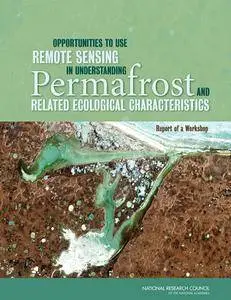Opportunities to Use Remote Sensing in Understanding Permafrost and Related Ecological Characteristics
Committee on Opportunities to Use Remote Sensing in Understanding Permafrost and Ecosystems: A Workshop; Polar Research Board; Division on Earth and Life Studies; National Research Council
2014 | ISBN: 0309301211 | 84 pages | PDF | 16 MB
Committee on Opportunities to Use Remote Sensing in Understanding Permafrost and Ecosystems: A Workshop; Polar Research Board; Division on Earth and Life Studies; National Research Council
2014 | ISBN: 0309301211 | 84 pages | PDF | 16 MB
Permafrost is a thermal condition – its formation, persistence and disappearance are highly dependent on climate. General circulation models predict that, for a doubling of atmospheric concentrations of carbon dioxide, mean annual air temperatures may rise up to several degrees over much of the Arctic. In the discontinuous permafrost region, where ground temperatures are within 1-2 degrees of thawing, permafrost will likely ultimately disappear as a result of ground thermal changes associated with global climate warming. Where ground ice contents are high, permafrost degradation will have associated physical impacts. Permafrost thaw stands to have wide-ranging impacts, such as the draining and drying of the tundra, erosion of riverbanks and coastline, and destabilization of infrastructure (roads, airports, buildings, etc.), and including potential implications for ecosystems and the carbon cycle in the high latitudes.



